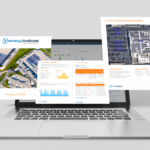On December 22, 2017, President Trump signed into law a $1.5 trillion tax reform bill, which the New York Times called “the most consequential tax legislation in three decades”. The bill has numerous impacts on solar and renewable energy projects in general.
Key Provisions
- Investment Tax Credit (ITC): there is no change to the ITC, pursuant to Code Section 48.
- Corporate tax rate: the corporate tax rate will be reduced from 35% to 21% starting in 2018.
- 100% bonus depreciation: the bill modifies bonus depreciation under Code Section 168(k) to allow 100% expensing for property placed in service after September 27, 2017 and before January 1, 2023. By increasing bonus depreciation to 100 percent, the new tax bill essentially allows eligible entities to deduct the entire allowable tax basis of the system in the first year of operation.
- BEAT: the bill includes a new base erosion anti-abuse tax (BEAT) provision, intended to prevent multinational companies from reducing their US taxes by “stripping” earnings across the US border by making payments to foreign affiliates that can be deducted in the United States. The BEAT applies if 10% of the cross-border payment amounts exceed the company’s regular U.S. tax liability.
What’s the net effect?
Disclaimer: Energy Toolbase is not a tax professional and does not give formal tax guidance, so make sure to consult with a CPA for their interpretation.
Regarding the attractiveness of the new tax reform rules on C&I solar projects. With the corporate tax rate going down from 35% to 21% means a (corporate, tax-paying) customer effectively captures less deprecation benefit, which would reduce the benefit/value of their project. But the other big item to consider is the reduced taxes the customer will pay, on their increased Net Income, as a result of solar reducing their ‘electric utility bill expense’. Most C&I solar analysis gets run on an ‘after-tax’ basis, meaning all cash flows of the project influence the customer’s Net Income. The biggest such item over the life of the project is the ‘avoided cost’ or ‘utility bill savings from solar’. For example, if you eliminate $50k of a customer’s utility bill in year 1, that would reduce the customers’ liabilities by $50k, and effectively increase their taxable net income by $50k. By having a lower tax rate, the customer would benefit from this.
When you model a project on an after-tax basis over the long term, like 20 or 30 years, the combined tax benefit from ‘energy savings’ generates more of a benefit, than the reduction in Depreciation. Therefore, the lower corporate tax rate would be beneficial for the customer, and the IRR & NPV of the project would improve.
Updates made in Energy Toolbase
- We added a new global incentive: “Federal – 100% bonus depreciation (2018, Tax Reform Bill)” for both PV and ESS projects. Note: only ‘Commercial’ projects are eligible.
- Users should consider changing their ‘Default Federal Income Tax Rate’ to 21%, in their ‘Company Settings’ > under the ‘Proposal Inputs’ tab.
Links
- Final US tax bill: effect on project finance market, Norton Rose Fulbright
- Tax Reform Bill’s Impact on Renewable Energy Projects, McGuireWoods LLP
- Webinar recording: Impact of the ‘2018 Tax Reform Bill’ on solar project economics with Keith Martin, Energy Toolbase



